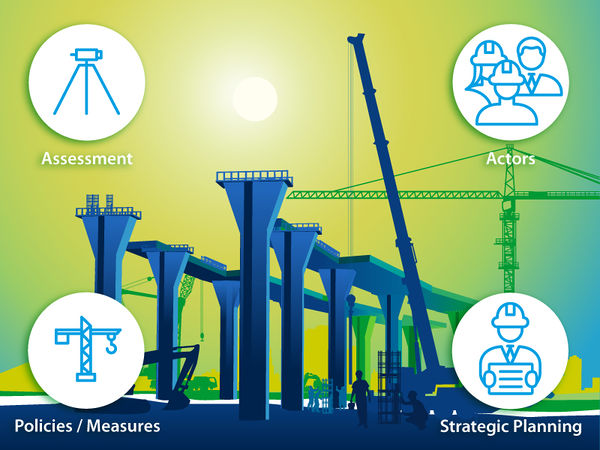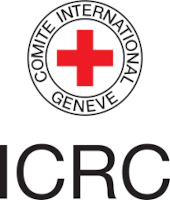Difference between revisions of "SE4Jobs Toolbox - Assessment"
From energypedia
***** (***** | *****) |
***** (***** | *****) |
||
| Line 132: | Line 132: | ||
| − | <br/>'''[Figure: Direct and indirect jobs per deployment phase (in jobs/MW) for different RE technologies based on minimum, median and maximum values for employment factors in the available literature | + | <br/>'''[Figure: Direct and indirect jobs per deployment phase (in jobs/MW) for different RE technologies based on minimum, median and maximum values for employment factors in the available literature. INSERT FIGURE - Source: Cameron and van der Zwaan, 2015<ref>“O&M” stands for the operation and maintenance of RE technologies.</ref>.]''' |
| + | |||
| + | '''Economic models''' | ||
| + | Quantitative data can also be gathered via '''economic models'''. These can be used to compare different investment scenarios (and policies that encourage such investments) in RE and EE, as well as to assess their impact on (domestic) economic parameters such as value creation and employment. Different types of models are available and are classified according to their methodology: | ||
| + | |||
| + | *'''Computable General Equilibrium (CGE) models'''calculate demand, supply and the prices for clearing markets after a ‘disturbance’ (e.g. the introduction of a policy). A CGE model can be disaggregated into different sectors, depending on the availability of data. | ||
| + | *'''Partial market models'''calculate the price of a single good (e.g. electricity) and, based on this, estimate impacts on demand and supply (including employment) along the value chain. | ||
| + | *'''Econometric models'''show the structure of the economy and calculate time series, rather than specific future states of the economy. Furthermore, they are capable of representing structural changes in and across sectors as a result of a policy, innovation or investment. Thus, they are particularly helpful for estimating any synergies and trade-offs from the expansion of RE and EE, and in identifying the actors that stand to benefit or lose out [[[SE4Jobs_Toolbox_-_Trade-offs|see section on synergies and trade-offs]]]. However, developing and running econometric models is more demanding in terms of the data required – time series data are needed, while CGE models require only discrete data. | ||
| + | *'''System dynamics'''is another modelling approach. The economy is represented in stocks (typically assets) and flows between these stocks (e.g. investments or income). Such models are also used to explore feedback loops. | ||
| + | *'''Microsimulations''' can be used to analyse the impacts of policies on the income of individual households. These are typically based on a range of different indicators, such as a household’s income, socio-economic status, consumption patterns, and demographic data. These kinds of models have demanding data requirements, but can yield useful analysis on the distributional impacts of many different policies. | ||
| + | |||
| + | <span style="color:#336699">'''''Use of system dynamics model in South African green economy modelling report'''''</span> | ||
| + | |||
| + | <span style="color:#336699">''The T21 system dynamics model was developed on a global scale by the United Nations Environmental Programme (UNEP) for the report “Towards a Green Economy: Pathways to Sustainable Development and Poverty Eradication”. UNEP, with support from the United National Development Programme (UNDP), then applied the model to the South African economy in the “Green Economy Modelling Report of South Africa – Focus on Natural Resource Management, Agriculture, Transport and Energy Sectors” to “evaluate the impact of green economy investment on medium to long-term environmental, economic and social development issues” between 2001 and 2030 ('''UNEP, 2013, p. 20'''). The approach was developed in a workshop with UNEP and various South African government agencies. It sought to use national data as much as possible and, in areas where data was not available, it relied on the assumptions used in the global green economy report.''</span> | ||
| + | |||
| + | <span style="color:#336699">''The model compared four different scenarios – two versions of ‘business as usual’ and two versions of a ‘green investment’ scenario “assum[ing] an active government intervention in the identified four sectors in order to encourage shifts towards low carbon, resource-efficient and pro-employment development” ('''UNEP, 2013, p. 28)'''. The comparison of the four scenarios using the system-dynamics T21 model showed that the green investment scenario in which an additional 2% of GDP was invested in the green economy led to the highest employment gains in the South African economy (28.3 million jobs in 2030, compared to fewer than 28 million jobs in the BAU scenarios). The study provides an example of an advanced system dynamics model being applied to a country to estimate the medium and long-term economic and employment effects of a green economy. Its key findings support policymakers arguing for active investments to accelerate the transition to a green economy.''</span> | ||
| + | |||
| + | '''Firm surveys''' | ||
| + | Innovations, investments and markets for energy efficiency technologies are particularly hard to trace. This is because the technologies and their applications are not specific to a particular sector, and are instead widely dispersed across the economy. To gather data on innovation, investments and employment related to energy efficiency, '''surveys''' '''of''' '''firms''' are a valuable source for estimating markets, and their prospects and impacts. | ||
| + | |||
| + | <span style="color:#336699">'''''Report: “Decent Work in the Green Economy. Business Cases from Turkey”'''''</span> | ||
| + | |||
| + | <span style="color:#336699">''This ILO publication was based on a qualitative study of businesses in various sectors of the green economy in Turkey. It used semi-structured face-to-face interviews with company representatives to provide the Turkish government with information to help formulate a green jobs strategy (See ILO, 2015). The study is noteworthy as it is one of the few examples showing how business leaders view the challenges of creating green jobs in Turkey. The study is part of a larger cooperation project with the ILO. The study raised the profile of green jobs in the political discourse, and informed government and social partners about the practical challenges businesses face.''</span> | ||
</div> | </div> | ||
=== Challenges in implementing the issue of assessing existing capacities and potentials <span style="line-height: 21px"><span class="mw-customtoggle-title6" style="font-size:small; font-weight: bold; display:inline-block; float:center; color: blue"><span class="mw-customtoggletext">'''[Expand]'''</span></span></span><br/> === | === Challenges in implementing the issue of assessing existing capacities and potentials <span style="line-height: 21px"><span class="mw-customtoggle-title6" style="font-size:small; font-weight: bold; display:inline-block; float:center; color: blue"><span class="mw-customtoggletext">'''[Expand]'''</span></span></span><br/> === | ||
Revision as of 14:26, 17 November 2017
SE4Jobs Toolbox – Laying the foundations for a sustainable development
ToolsPRODUSE EQuIP CADRE Interactive AILEG HELIO ELMA |
What is the issue assessment of existing capacities and potentials about? [Expand]
Why is such an assessment important for the expansion of RE and EE? [Expand]
What are key questions for addressing the issue of assessing existing capacities and potentials? [Expand]
How can the issue of assessing existing capacities and potentials be addressed? [Expand]
Practical aspects of the issue and good practice examples [Expand]
Challenges in implementing the issue of assessing existing capacities and potentials [Expand]
|
Good Practices
Brazil China India Mexico South Africa Turkey |
Reference
- ↑ (IRENA, 2015c) provides a thorough overview on the methodology used in the assessment of employment effects of RE.
- ↑ See http://resourceirena.irena.org/gateway/dashboard/
- ↑ See https://www.wec-indicators.enerdata.eu/
- ↑ The Global Atlas for Renewable Energy is available at http://irena.masdar.ac.ae/
- ↑ “O&M” stands for the operation and maintenance of RE technologies.
|
This article is part of the RE-ACTIVATE project. RE-ACTIVATE “Promoting Employment through Renewable Energy and Energy Efficiency in the MENA Region” is implemented by the Deutsche Gesellschaft für Internationale Zusammenarbeit (GIZ) GmbH on behalf of the German Ministry for Economic Cooperation and Development (BMZ). |





















